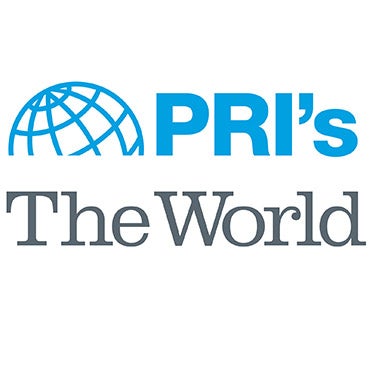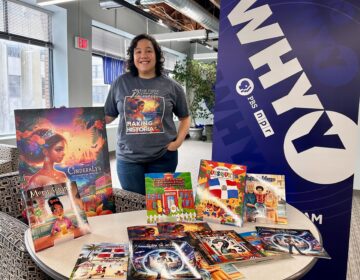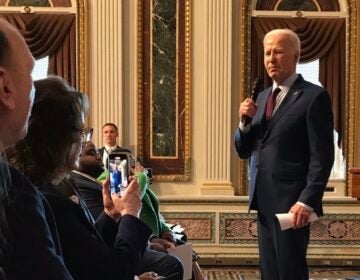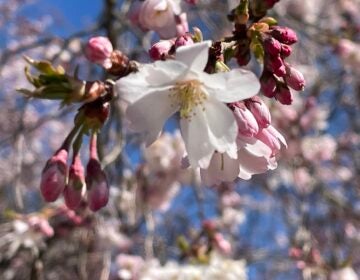Natural treasures housed in Delaware museum [video]
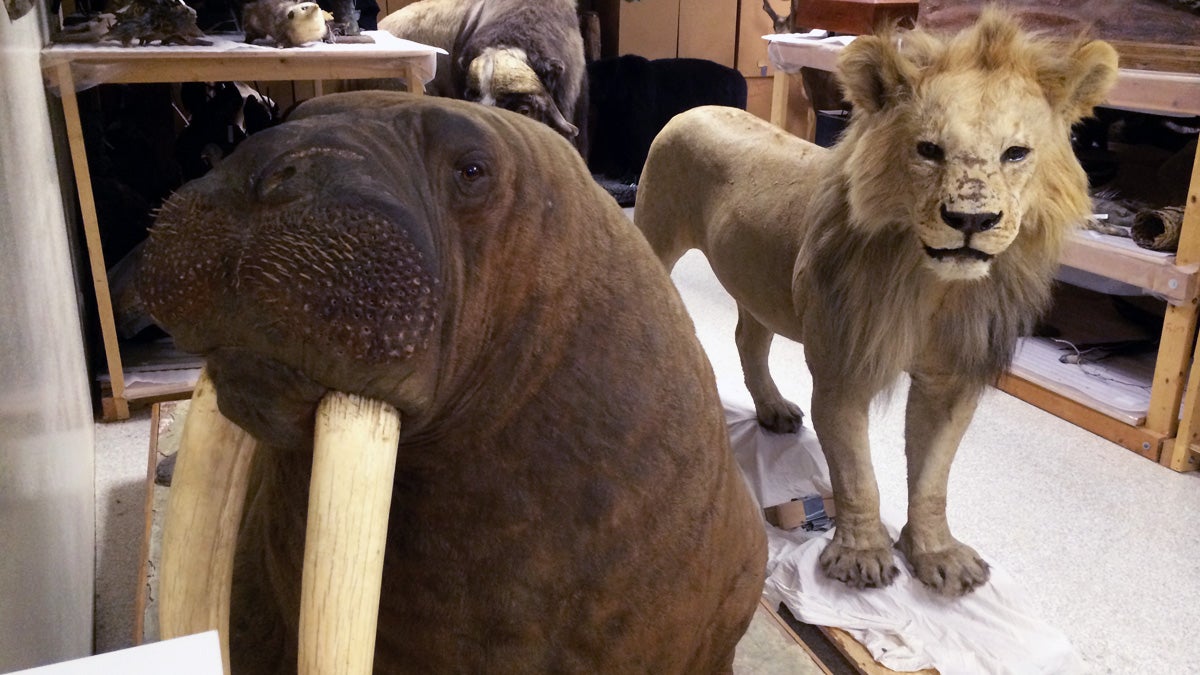
(Photo: Brian Drouin/ NewsWorks)
What’s in your attic? Old photos? Decorations? Old clothes? The Delaware Museum of Natural History has you beat.
They house one of the largest natural history collections in North America. The collection is in demand by museums and researchers around the globe. It’s a unique collection, and we went upstairs for a tour.
The collection is so big it is divided into separate areas upstairs. Turn one way, and you are headed toward the collection of birds and eggs. The other way, and you are lost in a room that I can best describe as being from the end of the first Indiana Jones movie, when the ‘Ark of the Covenant’ is being loaded into a big warehouse. It’s row after row of cabinets filled with shells of all kinds and sizes.
(Warehouse 51 from Indiana Jones and Delaware Museum of Natural History)
In between these two rooms you may come face to face with a gorilla, deer, polar bear or other taxidermy samples collected over the years. (for more on the taxidermy see our video below voiced by Dr. Jean Woods)
The birds
We started our tour with Dr. Jean Woods, curator of birds and director of collections at the Delaware Museum of Natural History.
The collection of birds at the museum is massive, if a bit macabre. There are over 100,000 specimens. These specimens consist of study skins and skeletons. These items are used by scientists the world over for all kinds of research.
“They can make measurements, wing length, bill length, leg length, tail length. They can look at the colors of the birds, and they now have really sophisticated machines to measure all of the aspects of the color of the birds. They can look at the patterning of where the colors are,” Woods said.
The museum also has the second largest collection of eggs in North America, drawer after drawer of eggs from all over the world, some over 100 years old. And unlike the drawers containing the birds, the shelves containing the eggs held a pleasant surprise. They made a nice sound, as the eggs gently clinked together, almost like the sound of billiard balls tapping each other.
Woods said the eggs and the birds can teach us about the past, present and future.
“We’re still trying to learn how different groups of birds are related to one another and how changes in the landscape over a long period time, since the Ice Ages, have led to what we see now in the bird world. And use that to teach us what to expect in the future.”
We owe much of our knowledge of birds and mammals to collections like these. Some of the specimens are extinct, and visiting the museum is the only way to study them.
“The specimens we have here, many of them are over 100 years old, and there’s no way to replace them,” Woods said.
One of the extinct birds the museum houses is the passenger pigeon. It went extinct in 1914, mainly due to man. People were hunting these birds for food, buying them at market like you would buy a chicken today, even serving them in restaurants.
“The passenger pigeon is an interesting case of over-hunting primarily. They were food. They’re about twice the size of a morning dove. So back in that day, it was great source of food,” Woods explained.
The shells
Our next stop was to the other side of the building to see Dr. Elizabeth Shea and the shell collection. The museum has one of the largest collections of mollusks in North America, and it’s right here in Delaware. Mollusks include things like snails, clams, oysters, cephalopods and octopuses.
The museum has roughly 2 million individual shells contained in cabinets lined up in rows that seem to go on forever. It really is unbelievable to see that many shells in one place.
Many of the shells in the collection are very old, and some have been collected from the 1970s, 1980s and 1990s. It’s almost like having a time machine.
“We can really reach back in time using a collection like this. It’s really an interesting kind of time capsule,” Shea said.
But Shea said not all of the shells are from Delaware. “One of the strengths of the collection are shells from the Indo-West Pacific. We have a lot of these big beautiful showy shells from the Indo-West Pacific. We have a lot shells from Delaware as well.”
If you remember back to when you were a kid strolling along the beach, you may remember finding big shells. Not so much anymore, due largely to changes in environment or overfishing.
“If you compare shells collected 50 years from a shell collected today a lot of the adult sizes are much smaller. It has a lot to do with how things are almost forced to mature faster because the larger specimens are being removed from the environment,” Shea said.
Most Delawareans have no idea this great collection exists right above their heads as they visit the museum. Internationally, however, the museum, Shea said, is very well known.
“Scientists all over the country, all over the world … will call us up or will access our specimens online. And they will be able to borrow from us or come and visit us.”
“I love working with the specimens, working with the researchers who are doing the research. It’s exciting to know I’m helping them do their research and learn new things about the world of birds,” Woods said.
Shea hopes to teach people that the collection isn’t just a bunch of shells. “I want people to come away with is that understanding and appreciation of the diversity of forms and a diversity of color that exist in the mollusk world.”
“We’re trying to preserve a sample of the diversity of life on Earth,” Woods said. “And that diversity is changing all the time, and so it’s important that we continued to document this.”
The museum is a tremendous resource, both locally and internationally, and it’s right in your backyard.
“It’s a dynamic place. It’s constantly moving, and changing and evolving. And we’re just getting started,” Shea said.
You can visit the Delaware Museum of Natural History Monday through Friday; special tours of the collection upstairs are available, contact the museum. You can learn more about the taxidermy contained at the museum by watching the video below voiced by Dr. Jean Woods.
WHYY is your source for fact-based, in-depth journalism and information. As a nonprofit organization, we rely on financial support from readers like you. Please give today.

